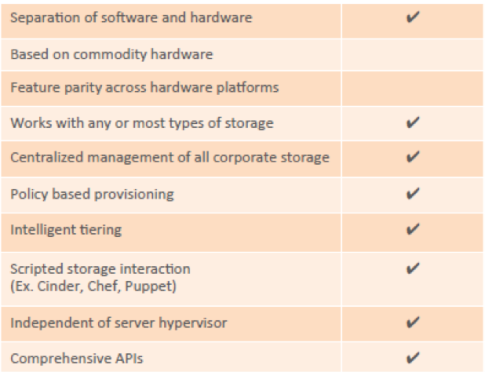by Michael Letschin, Field CTO
This is the first of six posts (aside from the Introduction) where we’re going to cover some practical details that help raise your SDS IQ and enable you to select the SDS solution that will deliver Storage on Your Terms. The first SDS flavor in our series is Scale-up Vendor-Defined “SDS”.
Scale-up Vendor-Defined “SDS” is where most of the traditional “big box” vendor solutions lie – think EMC’s VNX, NetApp’s FAS, or IBM DS4000 Series – each one being one or two usually commodity head nodes with JBOD behind it. While sold as an appliance, the argument is that SDS comes into play as front-end software that delivers REST-based management with rich APIs, to enable easy, automatic provisioning and management of storage.
Companies choose scale-up vendor-defined “SDS” often because it’s a well recognized brand, they have the vendor in-house already, and it appears to bring SDS benefits while maintaining a familiar in-house infrastructure. Scale-up Vendor-Defined “SDS” is often selected for legacy applications and some virtual apps, largely because its performance in these use cases is excellent. It’s a great choice if you’re running virtual machines with NFS, Exchange, or MS SQL. But, it’s still vendor-defined and not true SDS, so your hardware choices, and your flexibility, are restricted. It also means giving up one of the core SDS benefits – cost effectiveness – because you’ll be paying a premium for proprietary hardware. And that hardware is generally only one or two head nodes, so scalability is limited too.
Overall grade: D+
See below for a typical build and the report card: 

Watch this space for the next review in our series – Scale-up, Software-Only SDS
